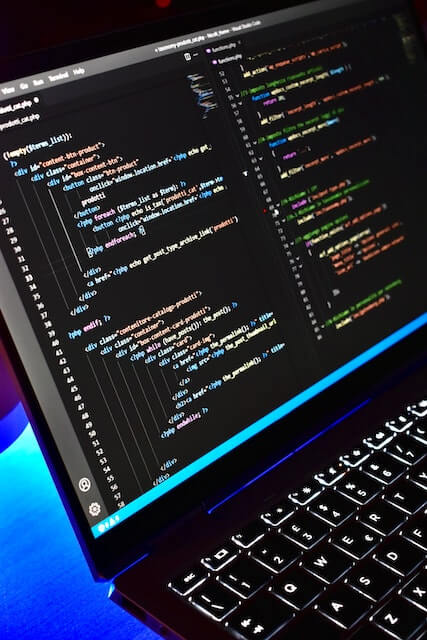
R&D Risk Management: How to Identify and Mitigate Risks

Research and Development (R&D) is the backbone of innovation. It’s a way of inventing something new, including solutions that might revolutionize the market. However, just like any other venture, R&D projects are associated with uncertainties, so companies prioritize R&D risk management as a part of their agenda.
Research and development risk management means assessing the likelihood that the actual gains from R&D activities will differ from expected outcomes. Oftentimes, companies face various types of R&D risks, including the following:
- Technological;
- Market-related;
- Financial;
- Organizational;
- External.
At its best, R&D risk assessment lets you minimize spending, deal with security threats, and enhance user acceptance. As a company that builds nearshore research and development centers, we know that effective R&D risk management is crucial for ensuring project success. This article delves into the common types of risks associated with R&D projects as well as covers the strategies to mitigate them.
Potential R&D risks and their types
R&D projects face a unique set of challenges and uncertainties. Any research and design projects should understand these R&D risks to be ready to mitigate them. Generally, these threats for startup and other projects can be broadly categorized into technical, market, financial, organizational, and external risks.
Technical risks
Technical risks arise from the inherent uncertainties in developing new technologies or products. There is often uncertainty about whether the technology can be developed as planned. Another problem is successfully integrating new technology with existing systems or processes. Another issue is that there is often no certainty regarding the performance of a new technology. There are also potential issues related to patenting, copyrights, or other intellectual property rights.
Market risks
Market risks are associated with the commercial viability of the R&D outcomes. There is always uncertainty about market demand for the new product or technology. Even market analysis leaves much space for research risks. The point is that many market trends can be easily misinterpreted. Another common threat is a competition risk. After all, competitors may launch similar or superior products. Startups should be also aware of regulatory risks. Changes in regulations could impact the development or commercialization of the product. Finally, there is a threat that customers may not accept or adopt the new product or technology.
Financial risks
Financial risks involve the potential for cost overruns, budget constraints, and funding issues. For example, many businesses can exceed the allocated R&D budget or have issues with securing necessary funding or investment. In addition, it may be challenging to get accurate cost estimates. Failure during this stage can lead businesses to financial shortfalls.
Organizational risks
Startup managers often underestimate organizational risks. However, it is a significant fault, as these challenges that stem from internal factors within the company can disrupt even the most promising R&D initiatives. First, companies can face challenges in securing necessary resources, such as skilled personnel and equipment. There are also management risks associated with poor project management or leadership issues. Finally, there may be significant difficulties in collaborating with partners, suppliers, or other stakeholders.
External risks
Finally, here is the most unpredictable category of risks. External risks are those beyond the control of the organization. They include economic downturns or changes that affect project funding and market conditions. Other threats that impact research and development projects are political instability or changes in governmental policies. Finally, natural disasters or environmental regulations may also impact project execution. Businesses should be aware of such threats and ready to adapt to them.
How to identify risks in R&D projects
Understanding research and development risks is very important, but you also need some practical skills to identify this threat throughout the project. The sooner you do an R&D risk assessment, the more likely you can manage them effectively. To handle this challenge, arm yourself with the best risk assessment techniques:
- Engage a diverse group of stakeholders in brainstorming sessions to identify potential risks. R&D risk assessment is a team effort. With that in mind, engage a team of experts like software engineers, marketing experts, project managers, business analysts, etc to get a unique perspective of each stakeholder. That way, you’ll ensure that no risk will go unnoticed.
- Leverage a panel of experts to reach a consensus on potential risks through multiple rounds of questionnaires according to the Delphi technique. This technique uses a set of questionnaires to find out expert opinions of various experts (R&D software development, marketing, etc.) about potential risks. The panel assesses responses and prioritizes risks, reaching a consensus on potential risks.
- Prepare a SWOT analysis that outlines the project’s strengths, weaknesses, opportunities, and threats. This technique gives you a bird’s eye view of the external and internal factors influencing your initiative. The document will also lay the groundwork for de-risking R&D.
- Identify the root causes of potential risks by examining past projects and lessons learned. This technique of R&D risk assessment leverages historical data to uncover the root causes of risks that might resurface in new R&D initiatives.
- Go through predefined lists of common risks in R&D projects to ensure all potential risks are considered. It’s beneficial to analyze commonly encountered R&D risks, as it lets you establish a much more comprehensive approach to risk identification.
Risk identification tools. Duringrisk assessment research and development, you can rely on several tools to detect project risks with greater efficiency. This approach can bring you the benefit of automation, helping your employees understand and visualize project risks much faster.
One example is risk registers. These are the documents that list all identified risks. They also help specialists get their descriptions, potential impacts, and project mitigation strategies. Flowcharts can serve as excellent visual representations of the project processes. They also help R&D teams detect innovation and development challenges associated with risks.
Finally, a popular solution is using fishbone diagrams. These are the tools commonly used for identifying the root causes of risks. They help specialists categorize potential causes into various categories, such as people, processes, and materials.
Stakeholder involvement. Involving stakeholders in the risk identification process is crucial. This approach can bring you the power of different perspectives. In addition, stakeholders can offer you fresh insights that help you understand project threats much better.
A good piece of advice is to rely on individuals directly involved in the project. Team members have detailed knowledge of the technical and operational aspects. They can help you gain a deeper understanding of risks that are easy to overlook from the managerial position.
Also, engage senior leaders for risk assessment in research and development. They can provide strategic insights and ensure alignment with organizational goals. In some cases, you may consider hiring external experts. Consultants can offer an external perspective and specialized knowledge. In addition, they can provide an objective perspective on your project and support it with strong domain knowledge.
Finally, communicate with customers and end-users to understand risks better. Those who will ultimately use the product can provide even more invaluable insights into potential market and customer acceptance risks.
Best strategies to mitigate risks in R&D
How to mitigate risks in R&D? Many practices should be applied simultaneously. When de-risking your R&D decisions, you should pay attention to a technical domain, analyze market threats, consider financial risks, stay on top of organizational issues, and remember the risks from external domains.
The central approach of all R&D mitigation practices is a robust risk assessment framework. Include both quantitative and qualitative analyses. Initially, qualitative assessments help categorize risks based on their potential impact and likelihood.
Various tools can help you with de-risking R&D decisions. These include risk matrices, which visually plot risks on a grid and highlight those that require immediate attention. They will help you prioritize risks that pose the greatest threat to project success. Complementing this, quantitative risk assessments assign numerical values to these factors. As a result, you get a basis for precise modeling and simulation techniques like Monte Carlo analysis. You can apply these techniques in various scenarios, addressing any type of risk.
- Mitigating technology risks
How to mitigate technical risks in R&D? One effective risk management strategy in addressing technical risks involves breaking down the R&D project into smaller phases. Each phase should have clear milestones and go/no-go decision points. This practice helps organizations evaluate progress and technical feasibility at each stage. It also makes staying on top of things much less challenging for the managers. Investing in robust prototyping and testing processes early in the development cycle helps identify and resolve technical issues before they escalate. This proactive approach ensures that potential technical barriers are addressed promptly. As a result, their impact on the overall project is minimized.
- Dealing with market risks
When de-risking the market side of your R&D decisions, comprehensive market research and competitive analysis are essential. Understanding customers’ wants and the latest market trends helps shape R&D projects in a way that makes end-products demanded. Getting early feedback from potential customers through beta testing or pilot programs is very useful. For example, you may start with a minimum viable product (MVP) that includes only the basic functionality. Later, you can collect user feedback and expand the solution’s functionality accordingly.
Studying competitors thoroughly allows organizations to find what makes their products unique and appealing compared to others.
Finally, create a flexible marketing strategy that changes with market conditions and consumer behavior.
- Safeguarding from financial risks in R&D
De-risking your R&D decisions finance-wise includes rigorous budget planning. Another relevant option is securing funding sources from investors or governmental institutions. You should pay much attention to accurate cost estimation. You can achieve it through the analysis of historical data. Benchmarking against similar projects is also a great option.
Don’t forget to establish a contingency fund. It is another critical step, providing a financial buffer to address unexpected costs. Using different funding sources, like grants, venture capital, and partnerships, helps avoid relying on just one source of money and spreads financial risk. A strict financial tracking system will also come in handy. This will ensure that project spending is monitored in real time. As a result, any budgeting issues can be quickly fixed.
- Dealing with organizational risks
To deal with organizational risks, you should foster a culture of cross-functional collaboration and continuous learning. Ensure that your team has all the skills and resources required for successful project completion. To have many challenges settled, hire specialized talent and invest in training programs.
Never underestimate the value of effective project management practices. Adopt Agile or Lean methodologies to enhance flexibility and responsiveness to changing project dynamics. These practices encourage iterative development, continuous feedback, and incremental improvements. All these factors help you reduce organizational risks significantly.
Maintaining clear communication channels is important when de-risking your R&D decisions. Regularly engaging with stakeholders ensures project objectives are aligned. It also helps address potential issues promptly.
- Handling external risks
Managing external risks requires a proactive approach to monitoring and responding to changes in the external environment. Constantly monitor regulatory developments, economic shifts, and geopolitical changes, as all these factors can impact your project. If their effect is challenging to predict, hire external analysts who will inform you about potential outcomes of regulatory changes.
Creating a strong regulatory compliance framework ensures that R&D activities follow relevant laws and standards, reducing regulatory risks. Form partnerships with suppliers, industry groups, and research institutions. This approach can provide early warnings and insights into external risks. These partnerships help share knowledge and derisk R&D in the best way possible.
- Extra research and development risk tips:
Get prepared for intellectual property (IP) risks. You should secure comprehensive IP protection through patents, trademarks, and copyrights. This not only safeguards the organization’s innovations but also provides a competitive edge in the market. Conduct thorough IP audits and freedom-to-operate analyses. Your task is to ensure that the R&D activities do not infringe on existing patents or IP rights. Otherwise, you can face legal issues. Eventually, you must establish continuous monitoring. Create a risk governance framework that includes regular risk reviews, audits, and updates to the risk management plan.
Facilitate real-time tracking and reporting of risks. Leveraging risk management software tools helps you stay on top of the risk landscape, enabling timely identification of emerging risks and proactive R&D risk management. Regular training and awareness programs for the project team and stakeholders will also help you. You will help your team members understand the importance of risk management.
R&D risk management examples and tools
For your convenience, we’ve compiled a list of tools to help you manage research and development department risks.
Proof of Concept (PoC): Starting with a prototype is a basic, yet effective tool used for risk management among research and development projects. It lets startups put the idea to test before investing in full-scale development.
Minimum Viable Product (MVP): This is another R&D risk management tool that lets companies validate market fit by gathering customer feedback at the early stage of development.
SWOT analysis: Analyzing Strengths, Weaknesses, Opportunities, and Threats is the best way to initiate an R&D risk assessment.
Delphi Technique: Putting heads together with a team of experts is a proven way to identify and prioritize risks.
Failure Mode and Effects Analysis (FMEA): This tool lets companies assess potential vulnerabilities in their strategy and their repercussions as well as map out actions for proper R&D risk management.
Ishikawa diagram: This diagram lets you look into the root causes during R&D risk assessment. You can put a potential risk in the center of a diagram and draw branches, showing potential causes.
Monte Carlo Simulation: Thanks to this tool, you can assess the likelihood and the magnitude of risk impact using a series of “what if?” scenarios.
Risk Matrix: This approach excels when you need to get a visualization of risk probability versus the severity of a potential issue.
How nCube can help you with R&D risk management
Most R&D initiatives come with inherent risks, and there’s no 100% guarantee the idea will take the market by storm. The common pain point for many companies is that testing an R&D concept requires either hiring a permanent squad or distracting your existing team from their core project.
We at nCube offer a more flexible approach, low-risk approach. We help startups and SMEs launch nearshore development teams in Eastern Europe and LATAM – a cost-effective alternative to in-house staffing. By partnering with us, you can:
- Continue partnership or let go of the team, without the burdens associated with internal staff;
- Launch an R&D team in weeks, not months – avoiding lengthy in-house recruitment processes;
- Get greater access to specialized R&D talent (AI/ML, Cloud, Data, IoT, etc.)
- Ramp up quickly to meet workload increases or
- Slow down team expansion whenever your priorities dictate it;
- Source skilled talent at much more affordable rates;
- Hand off R&D facility management, overhead, and team retention services to a top-tier provider like nCube.
Our model ensures you can manage R&D risks with agility and in a more budget-friendly way than compared to the in-house approach. Let’s connect and see if our approach works for you.
Wrapping up
Risk mitigation strategies are crucial for ensuring R&D success. By understanding the nature of risks, implementing structured risk evaluation processes, and leveraging tools for R&D risk assessment, you can keep potential issues at bay.
The success of R&D risk management depends on a comprehensive approach. You should integrate risk management into every stage of the project. By systematically identifying, assessing, and addressing risks, organizations can handle R&D projects more confidently and resiliently. Such a proactive method increases the chances of project success. In this case, your research and development initiative will drive innovation. The main outcome is a competitive edge in a dynamic technology market. And don’t forget about the option of asking seasoned vendors of software R&D services for help.
FAQ
Frequently asked questions about risk management in research and development
What is R&D risk management?
R&D risk management refers to a process of identifying, prioritizing, and assessing potential risks that may arise during an R&D initiative, as well as strategies to mitigate those risks.
How to mitigate risk in R&D projects?
By definition, research and development risk management involves implementing strategies to mitigate risks. Some steps for R&D risk assurance may include: Risk assessment using specialized tools (Risk Matrix, SWOT analysis, etc.), prototyping, market and competitor analysis, accurate cost estimation, hiring specialized talent, enhancing project management, monitoring shifts in regulations and other aspects that may affect your R&D activities.
What are examples of research and development risks?
Several common research and development risk examples can be a failure to deliver high-quality software (Technological), unproven feasibility (Technological), poor market acceptance (Market-related), lack of skilled R&D staff (Organizational), insufficient funding (Financial), and chain supply disruptions (External), to name a few.
Recommended articles


